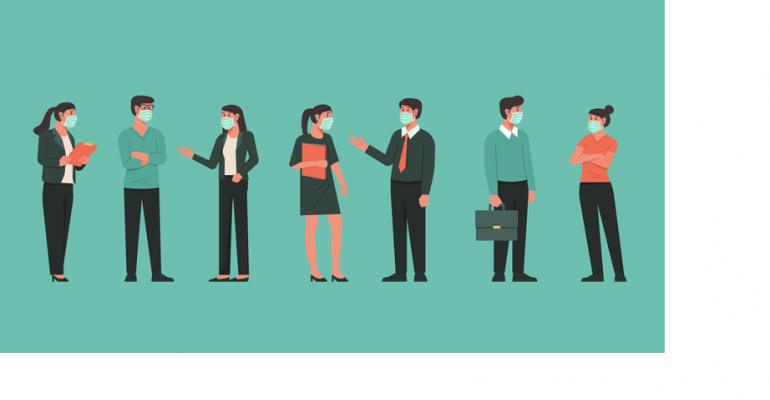While many in the meetings business are starting to feel optimistic about the return of in-person events thanks to mass vaccinations, masks will still be required for most events even if local laws do not dictate it. The largest hotel companies have all confirmed that they will maintain their mask requirements for everyone on property for the foreseeable future, while most organizations are likely to require masks as long as CDC guidance suggests it.
Given this, planners must confront the fact that the quality of communication at meetings featuring masked attendees will, most likely, not deliver the same benefit for attendees as pre-pandemic events did.
Science backs this up: According to the National Institute on Deafness and Other Communication Disorders, approximately 16 percent of Americans report some degree of hearing loss, and half of those individuals are younger than age 65. To those people, lip-reading is a critical means of understanding that is lost when participants wear masks while speaking.
For everyone else, though, masks are also detrimental to communication. This article from the science-oriented online publication Elemental notes that masks can reduce comprehension. “We all use lip reading without realizing it,” says Chris Frith, PhD, a professor emeritus of neuropsychology at University College London who has studied the role of facial expressions in communication. He adds that people could misunderstand the words others are saying if they can’t see others’ mouths moving as they talk.
And for informal networking time such as meals and breaks, “Words alone are not enough to communicate our attitudes, our feelings, our thoughts, and all the other stuff that is important for creating social and emotional bonds between people,” says David Matsumoto, PhD, a professor of psychology at San Francisco State University and founder of a training firm specializing in nonverbal communication, in the Elemental article.
As most event planners know, smiles are quite meaningful as social cues for attendees, exhibitors, and sponsors to draw industry colleagues into conversation. They “play an important role in greasing the rails of politeness,” adds Mark Frank, PhD, a professor and chair of the Department of Communication at the University at Buffalo, in the Elemental article. “When you walk past someone whose smile cannot be seen, you lose something that conveys that the person is approachable, polite, and friendly.”
Besides taking steps to keep background noise low so people can hear one another, there are a few things planners can suggest to attendees in order to improve communication quality at masked meetings. First, attendees can “use more gestures,” says Matsumoto. The use of waves, thumbs-ups, head nods, and other cues reinforce the message being spoken.
Also, injecting flair into mask styles can bring back some of the personality that’s lost when attendees’ faces are partially covered. Sporting a mask with smiley face, an inspirational message, or a favorite sports team’s logo can be indicative of one’s personality and provide an entry point for conversation that is an adequate replacement for the social smile—for the time being.
Lastly, attendees who want their face to be seen can opt to wear full-face shields rather than masks, though the policy on shield usage versus mask usage should be made clear by the planner before the meeting.





